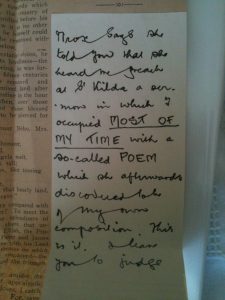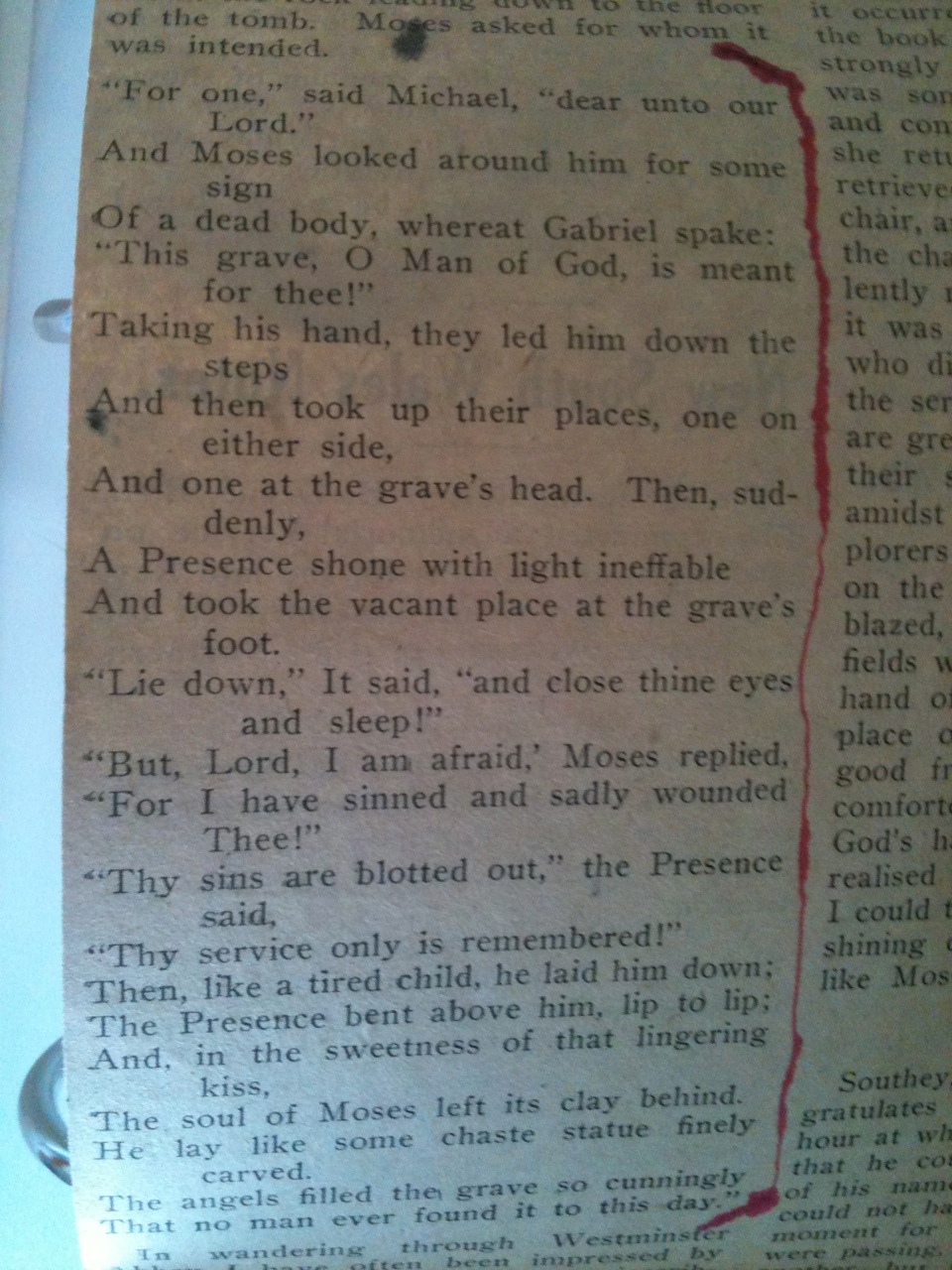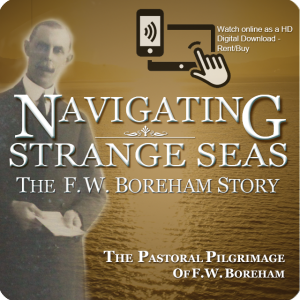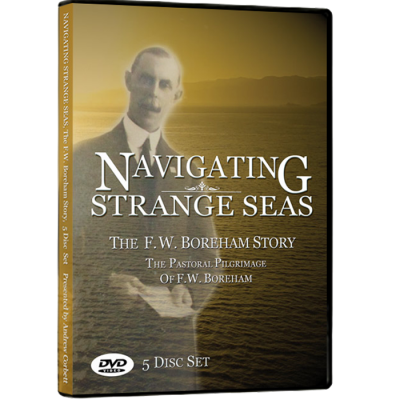Poetic Preaching
 Before there were multi-media sermons, artful preachers, such as F. W. Boreham, used word pictures to add media to their sermons. In 1895 there was no iTunes. In 1906 there were no Top 40 radio stations. In 1916 there were no talking pictures. In 1928 there no colour movies. In 1939 there were no personal computers. These key dates mark significant chapters in Boreham’s preaching career. Reading his sermons over the course of his sixty plus years of preaching, we notice over that career that he increasingly used poetry in his sermons and essays.
Before there were multi-media sermons, artful preachers, such as F. W. Boreham, used word pictures to add media to their sermons. In 1895 there was no iTunes. In 1906 there were no Top 40 radio stations. In 1916 there were no talking pictures. In 1928 there no colour movies. In 1939 there were no personal computers. These key dates mark significant chapters in Boreham’s preaching career. Reading his sermons over the course of his sixty plus years of preaching, we notice over that career that he increasingly used poetry in his sermons and essays.
In personal correspondence to a colleague, Dr. F.W. Boreham writes that he felt his preaching career highlights included several occasions when he was privileged to speak before thousands of people – which he did without notes. People were deeply moved when FWB preached. One of the reasons for this was the admiration he invoked for his diligent preparation of his messages. He not only did careful preparation, he also did a lot of memorisation for his sermons. His ability to cite poems verbatim would have been part of the reason people found his preaching so deeply moving.
In writing about how God may be heard through the record of nature, FWB cited Longfellow’s poem to the eminent Swiss naturalist, Agassiz. “He (Longfellow) sang of the way in which the beauties of Nature grow upon the soul of him who follows her all the way :- (to her Creator)”
And Nature, the old nurse, took
…The child upon her knee,
Saying: ‘Here is a story-book
…Thy father has written for thee!’
‘Come, wander with me,’ she said,
…‘Into regions yet untrod;
And read what is still unread
…In the manuscripts of God!’
And he wandered away and away,
…With Nature, the dear old nurse,
Who sang to him night and day
…The rhymes of the universe.
And whenever the way seemed long,
…Or his heart began to fail,
She would sing a more wonderful song,
…Or tell a more marvellous tale.
A Midwinter Holiday, “When Swans Fly High”, 1931, page 28
Today, preachers generally deny their hearers of the privilege of imagining. I am one of the guiltiest in this regard. The majority of my sermons are supported with elaborately Photoshopped graphics, video-clips, and movie scene references. I’ve been preaching through the book of Jeremiah over the past few years and have regularly shown clips from the movie about this Biblical character which denies my hearers the thrill of being there and seeing him in their imagination. I doubt that Dr. Boreham would have ever done it this way if he too had access to such multi-media. Instead, I suspect that if FWB were preaching in this era, he would have introduced a generation of media-drenched hearers to their own imaginations! And I think I know how he would have done it.
When FWB began is pastoral preaching career in 1895, he quickly realised that preparation of a sermon was pivotal to the successful delivery of a sermon. He soon found that the best way to be prepared was to have the choicest words carefully chosen well before he entered the pulpit. The best way to do this, he discovered, was to write and rewrite his sermons out beforehand as essays. While he is perhaps best known today as an Essayist, the act of writing these essays was a component to improving his preaching. Boreham also employed two other arts in preaching which formed a three-stranded cord: citing and drama.
In our era, pop-culture has nearly made our world a global village where recording artists and their pop songs are widely known. But in Boreham’s day, Western popular culture was largely embodied in poetry. He cleverly used poetry to make and illustrate a point (or the point) within a sermon or essay. And he frequently used the subtlety of poetry to make a dramatic point. In addressing the trend of people to be less committed to church attendance after the Second World War, rather than outright rebuking and condemning people for the spiritual slackness, he told a story and used a poem. In his essay, Chimes Among The Stars, he tells of a man who was dying and on his last day, a Sunday, despite his incredibly poor health, he insisted on going to church.
The story of his (Rev. George Herbert) death, as told by Izaak Walton, is one of the choicest of such records in our annals. On his last Sunday he astonished the household by rising and dressing as though he had suddenly returned to health. Then, with shining face and that lustrous sparkling of the eyes which is so characteristic of his hopeless malady, he seized his beloved violin – the instrument that had so often dispelled his depression and expressed his elation – and sang one of his own verses:
The Sundays of man’s life,
Threaded together on time’s string,
Make bracelets to adorn the wife
Of the eternal glorious King;
On Sundays heaven’s door stands ope;
Blessings are plentiful and rife,
More plentiful than hope.
CLIFFS OF OPAL, 1948, page 85-86
Not only did FWB memorise and cite poetry in nearly all of his later sermons and essays, he began to express himself in poetry and cite these in his works as well. In a personal note to an enquirer who did not recognise one of these poems which Boreham cited, he informed her that the poem was his own.

Poetry is still a powerful medium for conveying and illustrating truth. The more Ravi Zacharias has come to admire and appreciate the works of F. W. Boreham, the more that he too has incorporated poetry into his own messages. If you are a preacher looking to increase your effectiveness, perhaps developing an appreciation for poetry and also incorporating it into your sermons may help. If you are a writer seeking to use your talent to bring your readers to the Saviour, then the careful use of poetry can enhance your writing
I walked a mile with Pleasure,
She chatted all the way,
But left me none the wiser
For all she had to say.
I walked a mile with Sorrow,
And ne’er a word said she;
But, oh, the things I learned from her
When Sorrow walked with me!
WHEN SWANS FLY HIGH, “The Pageant of the Skies”, 1931, p. 174
Andrew Corbett




















0 Comments